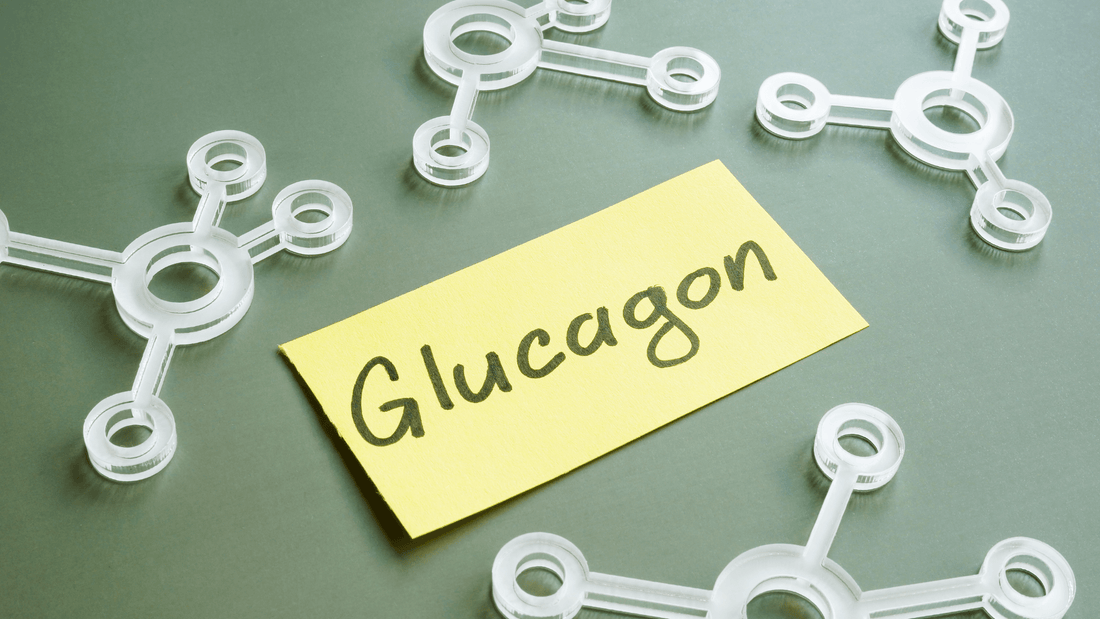
When a Low Becomes a Nightmare: Navigating Scary Hypoglycemia Alone
Share
For anyone living with diabetes, a "low" blood sugar (hypoglycemia) is an unwelcome visitor. Most of the time, we can manage these with quick-acting carbohydrates like juice or glucose tablets. But then there are the scary lows – the ones that leave you disoriented, shaky, and perhaps even unable to help yourself. These extreme episodes are not just uncomfortable; they can be dangerous. Knowing how to respond, especially when you're alone, is crucial.
This is where emergency glucagon comes into play. If your blood sugar drops so low that you're unable to eat or drink, or if you become unconscious, glucagon is a life-saving hormone that can quickly raise your blood sugar.
What is Glucagon and How Does it Work?
Glucagon is a hormone produced by the pancreas that has the opposite effect of insulin. While insulin lowers blood sugar, glucagon raises it by signaling the liver to release stored glucose.
Historically, glucagon was only available as an injectable solution, requiring preparation and administration via a syringe. While effective, this could be intimidating for caregivers and challenging (if not impossible) for an individual experiencing a severe low to administer themselves.
Thankfully, advancements have made emergency glucagon more accessible and easier to use.
Nasal Glucagon vs. Syringe Glucagon: The Key Differences
1. Nasal Glucagon (e.g., Baqsimi): The Game Changer
This revolutionary option comes as a dry powder in a small, single-use device. It's administered by simply inserting the tip into one nostril and pressing a plunger. No needles, no mixing, no special technique required.
Pros:
- Extremely Easy to Use: Can be administered by almost anyone with minimal instruction.
- No Needles: Reduces anxiety for both the person experiencing the low and the administrator.
- Fast-Acting: Absorbed quickly through the nasal passages.
- Can Be Used If Alone (with limitations): If you are conscious but severely impaired and can still manage to press the device, it might be possible to self-administer.
Cons:
- Cost: Can sometimes be more expensive than syringe glucagon (though insurance coverage varies).
- Nasal Congestion: May be less effective if the person has severe nasal congestion.
2. Syringe Glucagon (e.g., Glucagen, Gvoke HypoPen/Pre-filled Syringe): The Traditional Method
While some syringe glucagon kits require mixing a powder with a liquid, newer options like Gvoke come as a pre-mixed liquid in a pen or pre-filled syringe, making them much simpler to use than their predecessors.
Pros:
- Reliable: A long-standing, proven method for treating severe hypoglycemia.
- Cost-Effective: Often more affordable than nasal glucagon.
- Various Formulations: Traditional kits, auto-injectors (like Gvoke HypoPen), and pre-filled syringes are available.
Cons:
- Requires Injection: The need for a needle can be a barrier for some.
- Preparation (for older kits): Traditional kits require mixing, which can be difficult in an emergency.
- Not Ideal for Self-Administration if Severely Impaired: While pre-filled pens are easier, if you are truly incapacitated, self-injecting is not feasible.
When You're Alone: The Ultimate Challenge
This is the scenario everyone with diabetes dreads: a severe low when no one else is around.
When to Use Glucagon if You're Alone:
-
You are conscious but experiencing severe cognitive impairment: Your blood sugar is so low that you cannot think clearly, speak coherently, or physically manage to eat or drink quick sugars. You feel too disoriented or weak to grab juice, open a glucose gel, or even call for help.
-
You are able to physically administer it: This is the critical factor. If you can still manage to press the nasal glucagon device into your nostril, or inject a pre-filled syringe (like Gvoke), then it's time to act.
Important Considerations for Being Alone:
-
Preparation is Key:
-
Keep Glucagon Accessible: Do not store it in a medicine cabinet that's difficult to reach when disoriented. Keep it by your bedside, in your living room, or in a frequently used bag.
-
Pre-Filled/Nasal is Best for Solo Use: If you live alone, strongly consider having a pre-filled syringe (like Gvoke) or nasal glucagon (Baqsimi) as these are the easiest to attempt to self-administer if you're able.
-
-
Act Fast, If You Can: The moment you recognize severe cognitive impairment and are still physically capable, administer the glucagon. Do not wait until you are fully unconscious.
-
Medical Alert Devices: Consider wearing a medical alert bracelet or necklace that indicates you have diabetes. This can be critical if emergency services are called and you are unresponsive.
-
Inform Others: Make sure close friends, family, or even a trusted neighbor know about your diabetes, where you keep your glucagon, and how to use it in case they find you.
After Administering Glucagon
Once glucagon is given, your blood sugar should start to rise within 10-15 minutes. Even if you administered it yourself, you must seek immediate medical attention or inform someone of your situation. Side effects can include nausea and vomiting. Once you are more alert and able, eat some fast-acting carbohydrates followed by a longer-acting snack or meal to prevent another low.
Knowledge is Power: Reputable Resources
Understanding emergency glucagon and severe hypoglycemia is a vital part of managing diabetes safely. For more in-depth, medically reviewed information, please consult these trusted resources:
- American Diabetes Association (ADA): https://diabetes.org/
- National Institute of Diabetes and Digestive and Kidney Diseases (NIDDK): https://www.niddk.nih.gov/
- Joslin Diabetes Center: https://www.joslin.org/
-
Mayo Clinic - Hypoglycemia: https://www.mayoclinic.org/
diseases-conditions/ hypoglycemia/symptoms-causes/ syc-20373685
Don't let the fear of a scary low paralyze you. Be prepared, educate yourself and those around you, and talk to your healthcare team about which glucagon option is best for your lifestyle. Stay safe!
